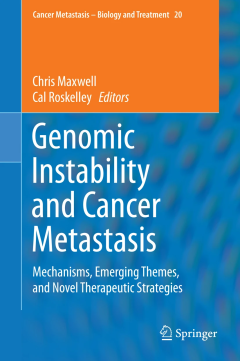Filter by

Atlas of Human Pluripotent Stem Cells in Culture
This lavishly-illustrated, authoritative atlas explores the intricate art of culturing human pluripotent stem cells. Twelve chapters – containing more than 280 color illustrations – cover a variety of topics in pluripotent stem cell culturing including mouse and human fibroblasts, human embryonic stem cells and induced pluripotent stem cells, characteristic staining patterns, and abnormal c…
- Edition
- -
- ISBN/ISSN
- 978-1-4899-7507-2
- Collation
- XV, 206
- Series Title
- -
- Call Number
- 611

Essentials of Single-Cell Analysis Concepts, Applications and Future Prospects
This book provides an overview of single-cell isolation, separation, injection, lysis and dynamics analysis as well as a study of their heterogeneity using different miniaturized devices. As an important part of single-cell analysis, different techniques including electroporation, microinjection, optical trapping, optoporation, rapid electrokinetic patterning and optoelectronic tweezers are des…
- Edition
- -
- ISBN/ISSN
- 978-3-662-49118-8
- Collation
- 127 b/w illustrations, 15 illustrations in colour
- Series Title
- -
- Call Number
- -

Essays on the History of Respiratory Physiology
This book consists of 23 essays about prominent people and events in the history of respiratory physiology. It provides a first-hand chronicle of the advancements made in respiratory physiology starting with Galen and the beginnings of Western physiology. The volume covers every aspect of the evolution of this important area of knowledge: pulmonary circulation, Boyle’s Law, pulmonary capillar…
- Edition
- -
- ISBN/ISSN
- 978-1-4939-2362-5
- Collation
- 115 b/w illustrations, 14 illustrations in colour
- Series Title
- -
- Call Number
- -

Sustainable Crop Protection under Protected Cultivation
This book focuses on pests (insect and mite) and diseases (fungal, bacterial, viral and nematode) in protected horticulture (fruits, vegetables and ornamentals) using physical, cultural, chemical, biological, host resistance, and integrated methods. It opens with chapters describing the setting in which integrated pest and disease control operates, i.e., the greenhouse and its environment. Subs…
- Edition
- -
- ISBN/ISSN
- 978-981-287-952-3
- Collation
- XXX, 434
- Series Title
- -
- Call Number
- -

Recent Advances in Lichenology: Modern Methods and Approaches in Biomonitorin…
This book discusses in detail molecular, mycobiont culture, biomonitoring and bioprospection of lichens, providing insights into advances in different fields of lichenology by applying modern techniques and approaches and examining how their application has enhanced or changed classical approaches. It offers a valuable resource, especially for beginners, students and researchers from different …
- Edition
- -
- ISBN/ISSN
- 978-81-322-2181-4
- Collation
- -
- Series Title
- -
- Call Number
- 581.3

Epstein Barr Virus Volume 2 One Herpes Virus: Many Diseases
Epstein Barr virus (EBV) was discovered as the first human tumor virus around 50 years ago. Since its discovery in Burkitt’s lymphoma it has been associated with various other malignancies, infectious mononucleosis and even autoimmune diseases. The two book volumes on EBV summarize the first 50 years of research on this tumor virus, starting with historical perspectives on discovery, oncogeni…
- Edition
- -
- ISBN/ISSN
- 978-3-319-22834-1
- Collation
- VI, 505
- Series Title
- -
- Call Number
- -

Introduction to Polyphasic Dispersed Systems Theory: Application to Open Syst…
This book introduces a new paradigm in system description and modelling. The author shows the theoretical and practical successes of his approach, which involves replacing a traditional uniform description with a polyphasic description. This change of perspective reveals new fluxes that are cryptic in the classical description. Several case studies are given in this book, which is of interest o…
- Edition
- -
- ISBN/ISSN
- 978-3-319-27853-7
- Collation
- -
- Series Title
- -
- Call Number
- -

ABC Transporters - 40 Years on
This book provides new structural, biochemical, and clinical information on ABC transporters. The authors explore and describe the state of the art of research, knowledge, and prospects for the future for this important family of proteins. The first ABC transporter was discovered in 1973 and was named P-glycoprotein. It elicits resistance to cytotoxic drugs, chiefly in human tumours, within wh…
- Edition
- Ed. 1
- ISBN/ISSN
- 978-3-319-23476-2
- Collation
- XIV, 376
- Series Title
- -
- Call Number
- 574.192 ABC a

Genotoxicity and Carcinogenicity Testing of Pharmaceuticals
This book provides an overview of the nonclinical testing strategies that are used to asses and de-risk the genotoxicity and carcinogenicity properties of human pharmaceuticals. It includes a review of relevant ICH guidelines, numerous case studies where follow-up studies were conducted to further investigate positive findings, and practical considerations for the use of alternative and emergin…
- Edition
- -
- ISBN/ISSN
- 978-3-319-22083-3
- Collation
- X, 206
- Series Title
- -
- Call Number
- 616.9 GEN

Genomic Instability and Cancer Metastasis
Metastasis is the primary cause of mortality associated with cancer, and tumor genomic heterogeneity is a likely source for the cells that support cancer progression, resistance to therapy, and disease relapse. This book connects cancer metastasis with genomic instability in a comprehensive manner. Section 1 outlines the fundamental mechanisms responsible for these cellular and tissue phenotype…
- Edition
- -
- ISBN/ISSN
- 978-3-319-12135-2
- Collation
- X, 247
- Series Title
- -
- Call Number
- 616.9 GEN
 Computer Science, Information & General Works
Computer Science, Information & General Works  Philosophy & Psychology
Philosophy & Psychology  Religion
Religion  Social Sciences
Social Sciences  Language
Language  Pure Science
Pure Science  Applied Sciences
Applied Sciences  Art & Recreation
Art & Recreation  Literature
Literature  History & Geography
History & Geography